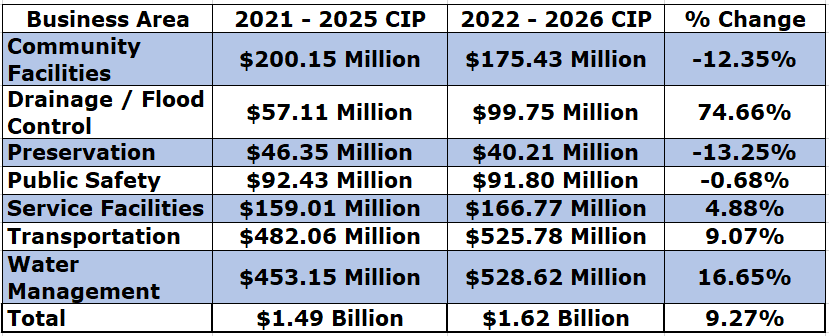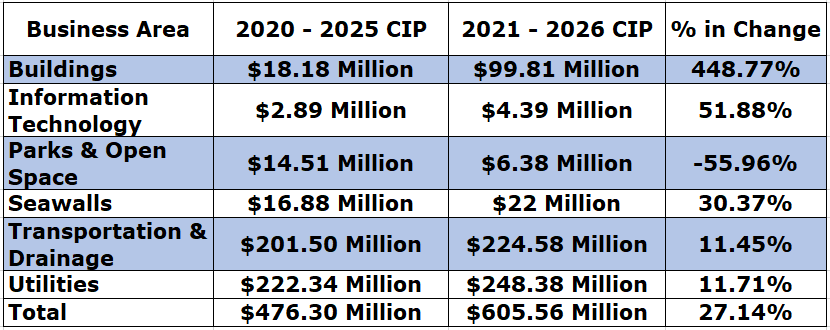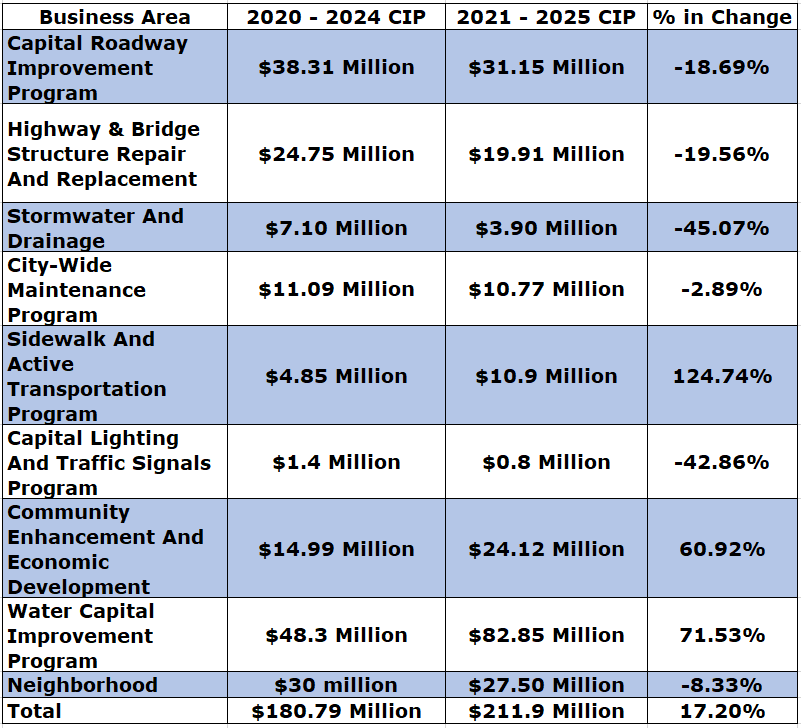November 2021's Water and Wastewater Market Recap is a snapshot of water industry insights. We share industry drivers, notable projects, recent mergers and acquisitions, interesting reads, and updates on upcoming meetings and conferences.
Industry Drivers

Our data team tracks new and updated industry drivers. Here are some recent drivers we have been following this month:
Pennsylvania Environmental Quality Board Approves Proposed Rule for PFAS Limits in Drinking Water
Status: Proposed
Organization: Pennsylvania Department of Environmental Protection
Summary: The Pennsylvania Department of Environmental Protection (DEP) said November 16, 2021 that the Environmental Quality Board, by a 17-2 vote, approved its proposed rule establishing maximum contaminant levels (MCLs) for two forms of PFAS in drinking water. The proposed rule would set MCLs of 14 parts per trillion (ppt) for perfluorooctanoic acid and 18 ppt for perfluorooctane sulfonic acid. The limits are stricter than the Environmental Protection Agency’s health advisory level of 70 ppt for the substances. The rule would apply to all 3,117 water systems in Pennsylvania. It is scheduled to be published in the Pennsylvania Bulletin next year. A 60-day comment period will follow publication. The DEP said at least five public hearings will be held on the rule. PFAS are a class of synthetic chemicals that have been used since the 1940s to make water, heat, and stain-resistant products such as cookware, carpets, clothing, furniture fabrics, and paper packaging for food. They are persistent in the human body and throughout the environment and are called “forever chemicals” because they take so long to break down. PFAS are known to cause adverse health effects but are classified by scientists as emerging chemicals because their risks are not completely understood.
Click here for more information
EPA Asks Science Advisory Board to Review Documents on PFAS Health Effects
Status: Proposed
Organization: Environmental Protection Agency
Summary: On November 16, 2021, the Environmental Protection Agency asked its Science Advisory Board to review four drafts of scientific documents regarding the health effects of two types of per- and polyfluoroalkyl substances (PFAS). The documents contain recent scientific data and new analyses that indicate that negative health effects may occur at much lower levels of exposure to Perfluorooctanoic acid (PFOA) and Perfluorooctane sulfonic acid (PFOS) than previously understood and that PFOA is a likely carcinogen. The EPA said that, following the review, it will use the information to inform health advisories and the development of Maximum Contaminant Level Goals and a National Primary Drinking Water Regulation for the substances. PFAS are a class of synthetic chemicals that have been used since the 1940s to make products that are resistant to water, heat and staining, including fabric for clothes, rugs and furniture and paper packaging for food. They are persistent in the human body and the environment and are called “forever chemicals” because they take so long to break down.
Click here for more information
EPA, Army Propose Rule to Re-establish pre-2015 Waters of the United States Definition
Status: Proposed
Organizations: Environmental Protection Agency, Army
Summary: On November 18, 2021, the Environmental Protection Agency and the Army announced a proposed rule to re-establish the pre-2015 definition of “waters of the United States,” which is the term for waters that can be regulated under the Clean Water Act. In 2015, the EPA, under the Obama administration, expanded the types of waters it could regulate under the act. In 2020, the agency, under the Trump administration, replaced the Obama administration’s rule with the 2020 Navigable Waters Protection Rule, which greatly reduced the types of waters that could be regulated under the act. The EPA and Army will take comments on the rule for 60 days after its publication in the Federal Register.
Click here for more information
Notable Capital Improvement Programs

Here are some recent, notable Capital Improvement Programs (CIPs). FirmoGraphs has deconstructed the CIPs into data elements, along with available project descriptions. Please feel free to request a meeting and review the data live in our business intelligence application.
City of Scottsdale, Ariz., Boosts Spending 9.27% in CIP for FYs 2021/22-2025/26
In its Capital Improvement Plan for its 2021/22 through 2025/26 fiscal years, the City of Scottsdale, Arizona, allocated $1.62 billion to projects, up 9.7% from $1.49 billion in its FY 2020/21-2024/25 CIP. The table below shows the types of projects the district plans to undertake and the amounts it allocated for them in its last two CIPs.

The most expensive project in the FY 2022-2026 5-year CIP is the Water Distribution System Improvements (WH21) project, which has $60.8 million allocated to it. The project is meant to improve the water distribution system in response to its aging and increasing demands being placed on it by various factors, including the revitalization of downtown Scottsdale. The project includes replacement of mains, pressure regulating valves, meters and other valves, as well as the design and construction of new water mains at various locations throughout the distribution system to improve service and reduce operating cost. Replacement of existing small mains (four inches and smaller) is required to meet fire flow requirements as set forth by city ordinance. This project will also include inspection, design, repair and replacement of water storage reservoirs and pump stations as driven by findings from the city’s Asset Management Program.
The SROG Regional Wastewater Facilities project (VF04) has the second largest allocation ($56.7 million); and the Water Treatment Facility Improvements project (WD04)has the third largest allocation ($38.7 million).
Oxnard, California Allocates $605.6 Million to Projects in 2021-2026 CIP
The City of Oxnard, California, has issued its Five Year Capital Improvement Program for 2021-26, which details capital spending of $605.6 million, an increase of more than 27% from the $476.3 million in capital spending detailed in its 2020-2025 CIP. The table below breaks down the spending in both CIPs by business areas and departments.

According to Oxnard’s 2021-2026 CIP, the city’s most expensive project is the Rice Avenue & Fifth Street Railroad Grade Separation, which will cost $100 million. The project’s major component is the construction of a six-lane bridge on Rice Avenue over Fifth Street/State Route 34 and the Union Pacific Railroad tracks. It also includes Class II street bicycle lanes, signal improvements at Sturgis Road, and Americans with Disability Act improvements.
The second and third most expensive projects are the Oxnard Aquatic Center and the Senior Center at 5th and Patterson, both of which are valued at $40 million.
Rockford, Ill., Allocates $82.85 Million on Water Projects in 2021-2025 CIP
The City of Rockford, Illinois, has adopted its 2021-2025 Capital Improvement Program, which details capital spending of $211.9 million, an increase of 17.2% from the $180.79 million in capital spending detailed in its 2020-2024 CIP. The table below breaks down the spending in both CIPs by business areas and departments.

Valued at $25 million, the annual neighborhood street and alley resurfacing program is the most expensive project in Rockford’s latest CIP, followed by the City Wide Water Main Replacement program ($22.9 million) and the Well 45 Reservoir Reconstruction ($15 million), which will replace the 100 year-old reservoir located at well 45.
What We Are Reading

Here are some recent articles our team has been reading:
- EPA Announces $424 Million WIFIA Loan to Improve Water Quality and Climate Resiliency in Miami-Dade County, Florida
- New York announces $83M for water infrastructure
- California releases updated groundwater report
- EPA Announces Intent to Bolster Limits on Water Pollution from Power Plants
Meeting Planner

Organizations have shifted their event strategies during the COVID-19 pandemic. We are tracking these changing meeting plans.
Meetings in December 2021 and January 2022
- SC-AWWA Confluence Conference - Dec. 9 - Dec. 10, 2021
- NACWA Water Utility Resilience Forum - Dec. 13 - Dec. 15, 2021
- WEF Particles and Colloids - Jan. 10 - Jan. 12, 2022
- AWE National Water and Wastewater Conference - Jan. 11 - Feb. 3, 2022
- NACWA Winter Conference - Jan. 31 - Feb. 3, 2022
Early Birds Registration
- Event: AWE Annual WateReuse Symposium
Dates: Mar. 6 - Mar. 9, 2022
Deadline for Early Registration: Jan. 6, 2022 - Event: WEF/AWWA Utility Management Conference
Dates: Feb. 21-24, 2022
Deadline for Early Registration: Jan. 14, 2022
Call for Papers
- Event: AWRA Spring Conference: Water Risk Under a Rapidly Changing World - Evaluation & Adaptation
Dates: Apr. 25 - Apr. 27, 2022
Deadline for Call for Papers: Jan. 3, 2022 - Event: AWRA Geospatial Water Technology Conference
Dates: Mar. 21 - Mar. 23, 2022
Deadline for Call for Papers: Jan. 7, 2022




